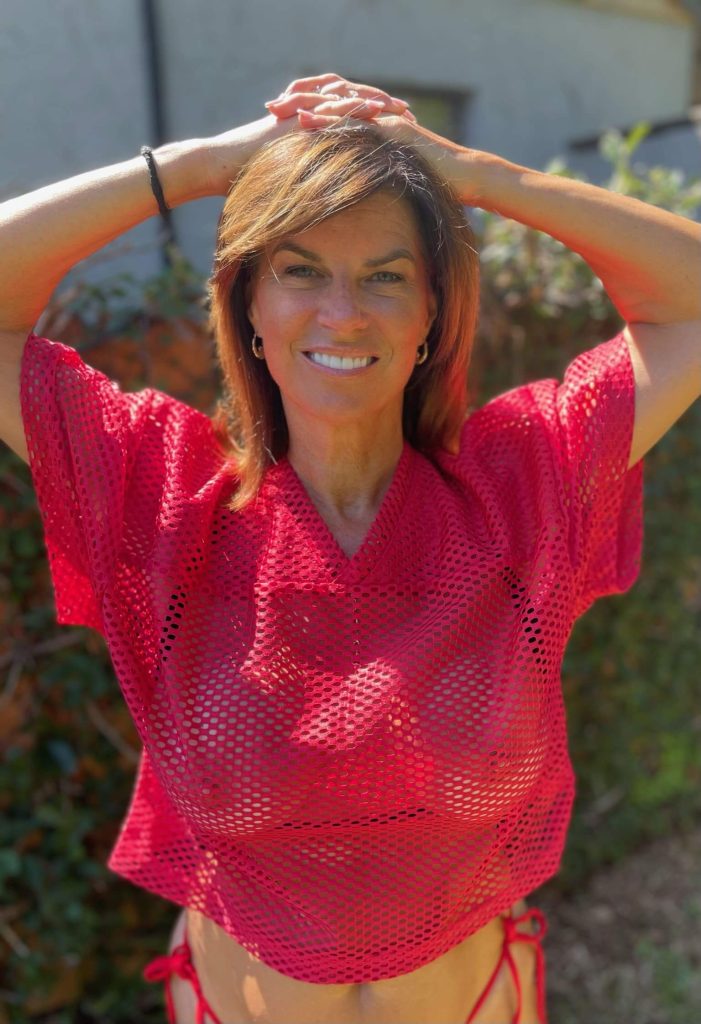The human body is a fascinating subject, and when it comes to the female form, there are various aspects that capture our attention and intrigue us. Among these, the breasts, often referred to as "tits" in colloquial terms, have been a topic of interest, discussion, and admiration for centuries. In this article, we will delve into the world of Mary Burke's breasts, exploring their cultural significance, societal perceptions, and the impact they have had on both art and popular culture.
The Story of Mary Burke’s Breasts: A Cultural Icon

Mary Burke, an iconic figure in the realm of art and fashion, is renowned for her bold and unapologetic embrace of her natural body, particularly her breasts. Born in the late 1940s, Mary rose to prominence as a model and actress, challenging the conventional beauty standards of her time. Her breasts, with their unique shape and size, became a symbol of female empowerment and a celebration of individuality.
Mary's breasts were not merely a physical attribute; they represented a statement. In an era when women were expected to conform to societal norms, Mary's bold and confident display of her natural curves sent a powerful message. She embraced her body as a work of art, challenging the notion that beauty had to adhere to a specific, narrow definition.
The Impact on Art and Fashion
Mary Burke’s breasts have left an indelible mark on the world of art and fashion. Her image, with its distinctive cleavage, graced the covers of prestigious magazines, challenging traditional notions of beauty and setting a new standard for female representation in the media.
Artists and photographers were drawn to Mary's unique physique, using her as a muse to explore themes of femininity, power, and self-expression. Her breasts became a symbol of artistic freedom, inspiring countless creative endeavors that pushed the boundaries of what was considered acceptable in the art world.
In the realm of fashion, Mary's influence extended beyond the runway. Her fearless embrace of her natural form inspired designers to create clothing that celebrated and accentuated the female figure, rather than concealing it. The impact of Mary Burke's breasts on the fashion industry cannot be overstated, as it paved the way for a more inclusive and body-positive approach to style.
A Cultural Phenomenon: The “Burke Effect”
The influence of Mary Burke’s breasts extended far beyond the art and fashion worlds. Her bold presence sparked a cultural phenomenon known as the “Burke Effect.” This term referred to the societal shift in attitudes towards female bodies, particularly breasts.
The "Burke Effect" represented a move away from the idealized, airbrushed images of perfection often portrayed in media. Instead, it embraced the reality and diversity of female bodies, celebrating the unique beauty of each individual. Mary's influence sparked a conversation about body positivity and the importance of accepting and loving one's natural form.
As a result, the "Burke Effect" led to a wave of body-positive campaigns, empowering women to embrace their bodies and challenge societal norms. It encouraged a more inclusive and accepting society, where women felt comfortable expressing their individuality and celebrating their unique attributes.
The Science and Biology Behind Breasts

While Mary Burke’s breasts have captivated the imagination and inspired cultural change, it is essential to explore the scientific and biological aspects that contribute to the diversity and uniqueness of breasts.
Breast Anatomy and Development
Breasts, scientifically known as the mammary glands, are a complex and fascinating part of the female anatomy. They are composed of fatty tissue, connective tissue, and a network of milk-producing glands and ducts. The size, shape, and appearance of breasts can vary significantly from person to person, influenced by a combination of genetic, hormonal, and environmental factors.
During puberty, the mammary glands undergo significant development under the influence of hormones such as estrogen and progesterone. This process leads to the formation of breast tissue, resulting in the distinctive shape and size that varies among individuals. The size of breasts is not solely determined by genetics; it can also be influenced by factors such as body weight, hormonal fluctuations, and even cultural practices.
The Role of Breasts in Human Evolution
Beyond their aesthetic appeal, breasts have played a crucial role in human evolution. They are an essential part of the reproductive process, providing nourishment to infants through breastfeeding. The ability to produce milk is a unique trait among mammals, and it has contributed significantly to the survival and development of human infants.
Throughout history, breasts have been a symbol of fertility, motherhood, and nurturing. In many cultures, they are revered as a representation of life and sustenance. The cultural significance of breasts extends beyond their biological function, influencing art, literature, and societal norms.
The Societal Perceptions of Breasts
Breasts have long been a subject of fascination and scrutiny in society. They are often associated with various cultural, social, and psychological factors that shape our perceptions and attitudes towards them.
Breasts as a Symbol of Femininity and Sexuality
Breasts have been intricately linked to femininity and sexuality throughout history. They are often seen as a defining feature of the female form, representing the essence of womanhood. In many cultures, breasts are associated with fertility, sensuality, and attractiveness.
The size, shape, and firmness of breasts are often used as indicators of a woman's age, sexual maturity, and attractiveness. This association has led to the objectification of breasts in media and popular culture, where they are frequently sexualized and used as a marketing tool.
The Influence of Media and Popular Culture
The media plays a significant role in shaping societal perceptions of breasts. From advertisements to fashion magazines, the portrayal of breasts is often idealized and standardized. This can lead to unrealistic expectations and body image issues among women, as they strive to conform to these often unattainable ideals.
However, in recent years, there has been a growing movement towards body positivity and acceptance. Influencers, celebrities, and activists are using their platforms to challenge the narrow beauty standards imposed by the media. This shift in perception is empowering women to embrace their natural bodies, including their breasts, and celebrate their uniqueness.
The Evolution of Breast Aesthetics
Breast aesthetics have evolved significantly over the years, influenced by cultural trends, fashion, and changing societal attitudes. The ideal breast shape and size have varied throughout history, reflecting the shifting standards of beauty.
Historical Perspectives on Breast Aesthetics
In ancient times, breasts were often celebrated as symbols of fertility and abundance. In many ancient cultures, larger breasts were associated with wealth, prosperity, and fertility. Statues and paintings from ancient civilizations often depict women with ample breasts, emphasizing their role as nurturers and symbols of life.
During the Renaissance period, breasts were depicted with a more realistic and natural approach. Artists like Michelangelo and Leonardo da Vinci portrayed breasts as an integral part of the female form, celebrating their beauty and shape without idealizing them.
Modern Trends and the Idealization of Breasts
In modern times, the idealization of breasts has taken on a different form. The media and fashion industry often portray breasts as objects of desire, focusing on their size and shape as a measure of beauty and attractiveness.
The popularity of breast augmentation surgery has contributed to the notion that larger breasts are more desirable. However, this trend has sparked a debate about the impact of such procedures on body image and self-esteem. Many advocates for body positivity argue that women should embrace their natural breasts, regardless of size or shape, and reject the pressure to conform to unrealistic ideals.
Breast Health and Self-Care

Beyond their cultural and societal significance, breasts are an essential part of a woman’s overall health and well-being. It is crucial to prioritize breast health and engage in practices that promote self-care.
Breast Cancer Awareness and Prevention
Breast cancer is a significant health concern for women worldwide. It is the most common cancer among women, and early detection is crucial for successful treatment. Regular breast self-exams, clinical breast exams, and mammograms are essential for identifying any potential issues early on.
Breast cancer awareness campaigns have played a vital role in educating women about the importance of self-examinations and early detection. These campaigns aim to empower women to take control of their breast health and seek medical attention promptly if they notice any changes or abnormalities.
Breast Self-Exams and Regular Check-Ups
Breast self-exams are a simple yet powerful tool for monitoring breast health. Women should perform regular self-exams to become familiar with the normal look and feel of their breasts. This can help identify any changes, lumps, or abnormalities that may require further medical attention.
In addition to self-exams, regular check-ups with a healthcare provider are essential. Healthcare professionals can perform clinical breast exams and recommend additional screening tests, such as mammograms or ultrasounds, based on individual risk factors and age.
Conclusion: Embracing the Diversity of Breasts
Mary Burke’s breasts have served as a powerful reminder that beauty comes in all shapes and sizes. Her bold embrace of her natural form has inspired a cultural shift towards body positivity and acceptance. By challenging societal norms and embracing our unique attributes, we can foster a more inclusive and compassionate society.
Breasts are not merely physical attributes; they are a part of our identity and a celebration of our femininity. By understanding the scientific, cultural, and societal aspects of breasts, we can appreciate their beauty and diversity. Let us embrace the uniqueness of breasts and reject the pressures of conformity, promoting a culture that values and celebrates the natural form.
What is the significance of Mary Burke’s breasts in art and fashion?
+Mary Burke’s breasts became a symbol of artistic freedom and a celebration of individuality. Her unique physique inspired artists and designers to challenge traditional beauty standards, embracing diversity and body positivity.
How have breasts been perceived throughout history?
+Breasts have been associated with femininity, sexuality, and fertility throughout history. Their cultural significance has varied across different civilizations, often reflecting societal attitudes and norms.
What is the impact of media on societal perceptions of breasts?
+The media plays a significant role in shaping societal perceptions of breasts. Idealized images in advertisements and fashion magazines can lead to unrealistic expectations and body image issues.
How can women prioritize breast health and self-care?
+Women can prioritize breast health by performing regular breast self-exams, attending clinical breast exams, and undergoing recommended screening tests like mammograms. Breast cancer awareness and early detection are crucial for successful treatment.